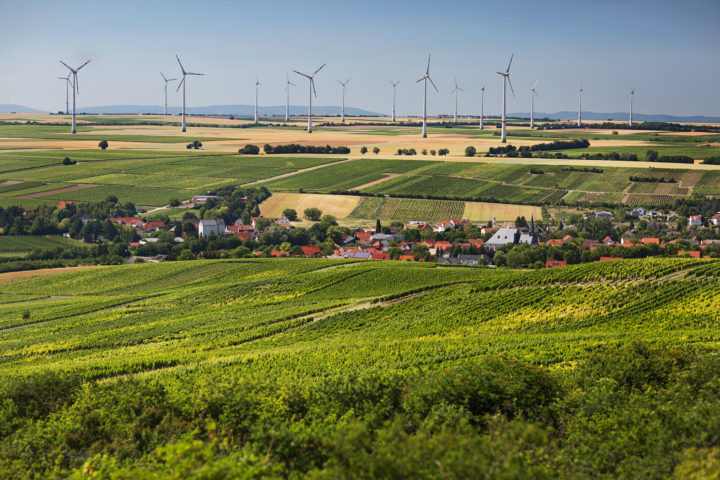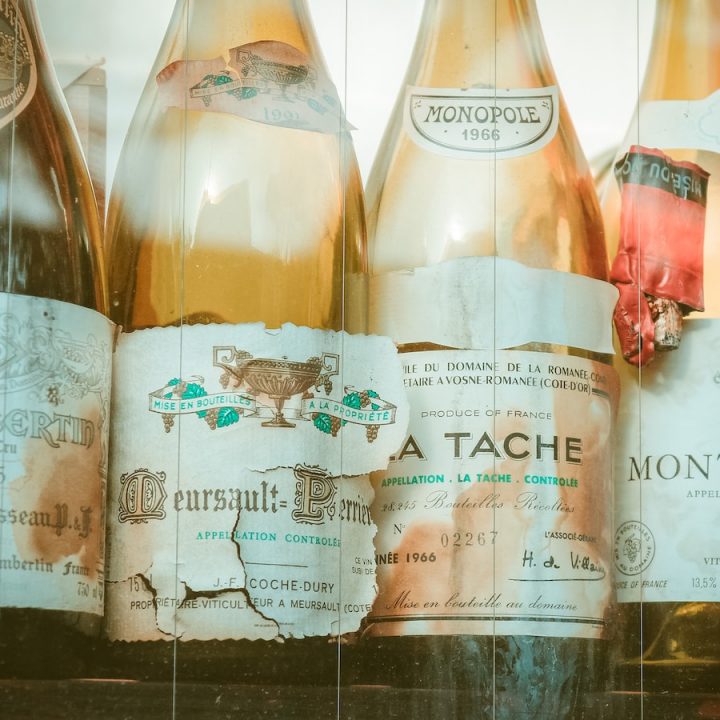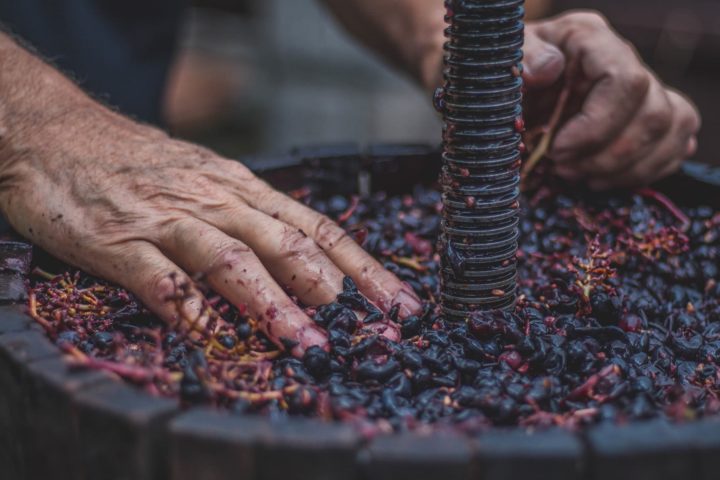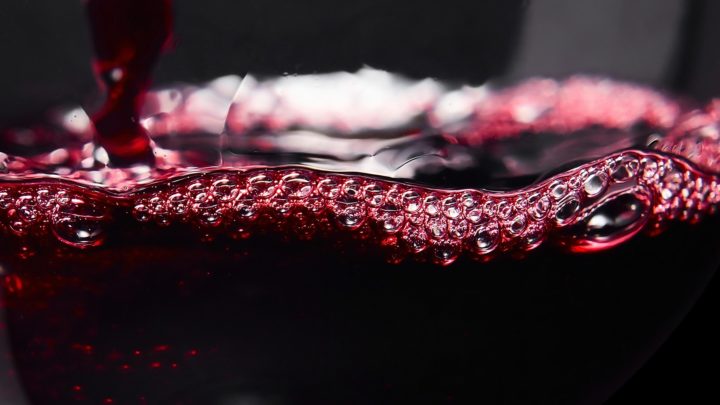Are you looking for a wine with low acidity? Are you wondering which wines have low acidity? Do you react to Riesling or Sauvignon Blanc with heartburn or do you simply find them too acidic? Then you’ve come to the right place! In our article, we not only show you grape varieties and red and white wines that have a low acidity, but also explain how acidity gets into the wine and how you can perhaps identify a less acidic wine before you even take your first sip.
There is an impressive variety of grape varieties in the world of wine, and not all of them are high in acidity. In this article, we’ll show you which wines are lower in acidity and how to recognize them. But that’s not all: we’ll also look at how acid gets into the wine and what function acid actually has in wine. Whether you’re standing at the wine rack or holding a wine list in your hand, the information in this article will help you find a wine that suits your taste.
Grape Varieties & Co.: Identifying & Enjoying Low-Acid Wines
You are standing in front of the wine rack or have the wine list in your hand and ask yourself: “How do I recognize a wine with low acidity?” The good news right away: with a little experience and the knowledge of what to look for, you will quickly find a wine that appeals to you. You’ll find the knowledge in this article, but you’ll have to gain the necessary experience yourself. Because which wine is too sour for you depends heavily on your personal preferences.
Below we have compiled a list of red and white wines in which you will find grape varieties (as well as cuvées) that you should definitely try if you are looking for a wine with low acidity.
White Wines with a Low Acidity
- Chardonnay
- Marsanne
- Viognier
- Sémillon
- Muscatel
- Malvasia
- Pinot Blanc
- Gewürztraminer
- Müller-Thurgau
- Kerner
- Chasselas
- Macabeo / Viura
- Cortese
- Grenache Blanc
- Pinot Gris
Rotweine mit wenig Säure
- Merlot
- Grenache
- Pinotage
- Dornfelder
- Dolcetto
- Syrah / Shiraz
- Tempranillo
- Primitivo / Zinfandel
- Carménère
- Bordeaux-Cuvées
- Cabernet Sauvignon
- Malbec
- Petite Syrah
- Port Wine
Why to Drink Wines With Low Acidity?
For many wine lovers, a low-acid wine is unthinkable! But what do you do if a dry Riesling or Sauvignon Blanc immediately gives you heartburn or you simply find it too acidic? Wines must indeed have a certain acidity, but the aim is to create a harmonious overall picture. A wine should never taste sour! If you are only bothered by the acidity, you could simply choose a semi-dry Riesling. The residual sugar in the wine softens its taut acidity, making it seem less acidic than it actually is.
However, if you are one of those people who get heartburn or other physical complaints when drinking high-acid wines, you don’t have to give up the pleasure. Just because a wine is low in acidity doesn’t mean it has to be stale or boring. In fact, some of the most expensive and sought-after wines fall into the “low acidity wine” category – such as the infamous Chateau Petrus (red wine, Merlot, > $2,000) or a Montrachet Grand Cru (white wine, Chardonnay, ≈ $1,000).
So there’s no reason to be ashamed at your next wine tasting because you don’t like acid bombs.
What is Acidity Actually Looking for in Wine?
Even if acid-sensitive people may not like to hear it, acidity plays an important role in wine. To understand where acidity comes from, which acids are contained in wine and what influences the acidity in the finished wine, let’s delve a little deeper into the matter! Let’s start at the very beginning.

Where Exactly Does the Acidity in Wine Come From?
The finished wine contains a variety of different acids, which either come from the grapes or are by-products of the winemaking process. The three most important are tartaric acid, malic acid and citric acid, which make up around 2/3 of the acids contained in wine and are produced in the still green grapes. Malic acid in particular is responsible for many different processes in the plant, such as energy transport. Tartaric and malic acid can only be distinguished in taste by their acidity, with tartaric acid being the more acidic. The initially high acid content in the berries protects them from being eaten by songbirds before the seeds/kernels are ripe.
As the production of acids takes place in the chlorophyll-containing green tissue of the grapes, it slows down as the grapes ripen until it stops completely. As the grapes ripen, the acidity continues to decrease, while the sugar content in the berries steadily increases. The acidity of the grapes is a decisive factor for winegrowers in determining the right time to harvest. The ideal sugar-acid ratio is crucial to ensure that the resulting wine is rounded and tastes neither too sour nor bland. How quickly the acid in the fruit degrades depends largely on the climatic conditions. A simple rule of thumb is that wines from warmer regions often have less acidity than wines from cooler regions. However, this only applies to wines from the same grape variety and if the wines were produced in a similar way.
The many different grape varieties have different concentrations of acidity within their berries. A Pinot Blanc, for example, is significantly less acidic than a Riesling or Silvaner.
Importance of Acidity During Winemaking
During wine production, acid is broken down in the form of tartar and plays an important role in the energy metabolism of yeasts in the form of the pH value. During fermentation and ageing, new acids are also produced, such as acetic acid (volatile), butyric acid (volatile), lactic acid (non-volatile) and succinic acid (volatile).
Malic acid is broken down by yeasts or lactic acid bacteria during both alcoholic fermentation and malolactic fermentation (also known as malo or biological acid degradation). Succinic acid or lactic acid are produced as by-products. The latter in particular gives wines a much milder character and a melting mouthfeel. A classic example is Chardonnay matured in wood. Malolactic fermentation is often used here to give the wine a buttery and melting note.
The pH Value and the Role of Acidity in the Finished Wine
Acidity plays various roles in wine and is crucial for its color, mouthfeel and storage potential. For example, the pH value also influences the refraction of light in the wine and ensures that low-acid (red) wines have a blue-violet shimmer. In addition, acidity stabilizes the color of a wine, which is why low-acid wines such as Shiraz take on a brownish hue after a short storage period.
For most wine drinkers, however, its role in the taste of the wine is of crucial importance. The acidity in wine ensures that wines retain their fresh, lively and fruity character. It makes white wine refreshing and balances out a high alcohol content in red wines. For this reason, a wine cannot exist without acidity. Even in low-acid wines, a balanced acidity is crucial for the overall impression, as it keeps alcohol and residual sugar in check. The pH value of wine is between 2.9 and 4.0 – depending on the grape variety and growing region.
What Can Increase or Decrease the Acidity in Wine?
Whether a wine is low in acidity or rather racy on the palate is influenced by various factors. The main role is played by the grape variety and the natural concentration of acidity in its berries. A Riesling, for example, already has significantly more acidity by nature than a Gewürztraminer.
Another influential factor is the growing region, or more precisely the prevailing climate. This largely determines the acidity of a wine. In regions with high night-time temperatures above 20 degrees Celsius, the acid is not converted into sugar, as photosynthesis is not possible. The plant therefore breaks down the acid. Wines from warmer regions therefore often show somewhat less acidity.
In cold regions, night-time temperatures rarely or never rise above the magic threshold of 20 degrees, which preserves the acidity in the berries and requires a higher residual sweetness to keep it in check.
The acidity also depends on the time of harvest. If the winegrower harvests earlier, the grapes contain more total acidity than if they are harvested later.
Higher acidity:
- early harvest
- grape varieties with naturally high levels of malic acid (e.g. Riesling, Sauvignon Blanc, Silvaner, Pinot Noir, etc.)
- cool climate
- cool night temperatures < 20 degrees Celsius
Lower acidity:
- fully ripe harvest / overripe grapes
- grape varieties with a low concentration of malic acid (Chardonnay, Pinot Blanc, etc.)
- warm climate
- hot night temperatures (> 20 degrees Celsius)









